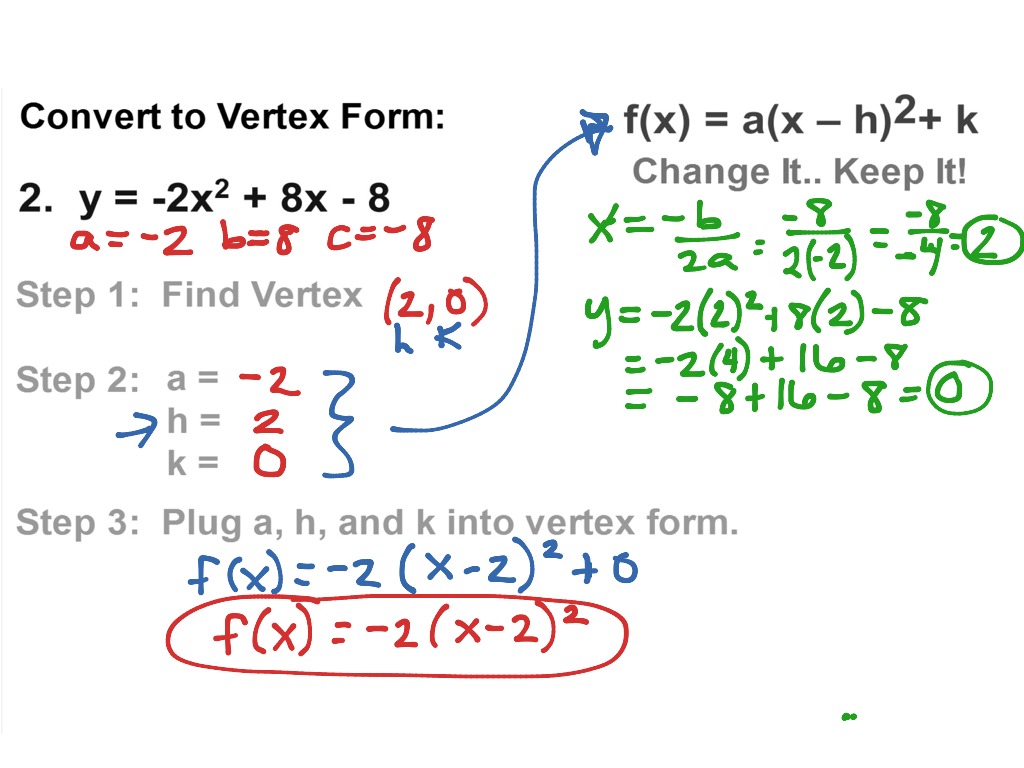

Thus, the vertex formula is: (h, k) = (-b/2a, -D/4a) where D = b 2 - 4ac Formula 2 We know that b 2 - 4ac is the discriminant (D). Thus, the above equation becomes:ĭistributing "a" on the right side and adding "c" on both sides:Ĭomparing this with y = a (x - h) 2 + k, we get: We can write x 2 + b/a x + b 2/4a 2 as (x + b/2a) 2. Adding and subtracting this on the right side (inside the parentheses): Here, half the coefficient of x is b/2a and its square is b 2/4a 2. Let us convert it to the vertex form y = a(x - h) 2 + k by completing the squares. We know that the standard form of a parabola is, y = ax 2 + bx + c. The two vertex formulas to find the vertex is:įormula 2: x-coordinate of the vertex = -b / 2a Derivation of Vertex Formulas Formula 1

The vertex formula helps to find the vertex coordinates of a parabola. Let's learn more about the vertex formula and solve examples. The vertex at which the parabola is minimum (when the parabola opens up) or maximum (when the parabola opens down) and the parabola turns (or) changes its direction. As we know the standard equation of a parabola is y = ax 2+bx+c. If the coefficient x 2 is positive then the vertex is the bottom of the U- shaped curve and if it is negative the vertex point is the top of the U-shaped curve. The Vertex formula of a parabola is used to find the coordinates of the point where the parabola crosses its axis of symmetry.


 0 kommentar(er)
0 kommentar(er)
